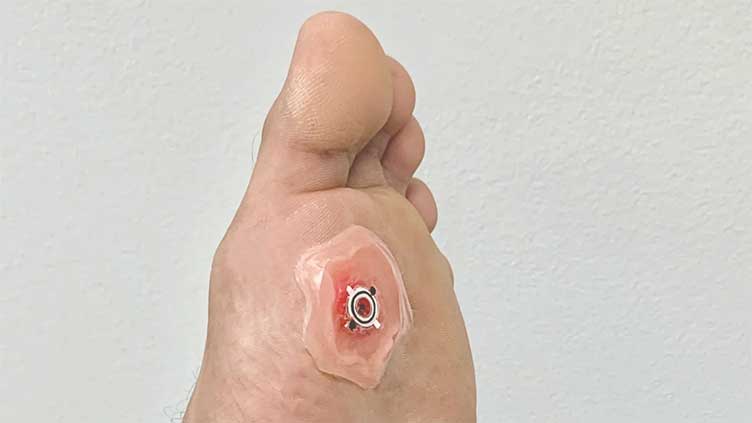Electric bandage speeds up healing of chronic wounds

A far less expensive technology
(Web Desk) - Scientists at North Carolina State University have created a cost-effective bandage that uses an electric field to speed up the healing of chronic wounds.
In animal tests, wounds treated with these electric bandages healed 30% faster than those treated with traditional bandages.
Chronic wounds are often difficult to manage partly because current treatment methods are very expensive, posing further challenges for patients.
“Our goal here was to develop a far less expensive technology that accelerates healing in patients with chronic wounds,” says Amay Bandodkar, co-corresponding author of the study.
“We also wanted to make sure that the technology is easy enough for people to use at home, rather than something that patients can only receive in clinical settings.”
The research team developed water-powered, electronics-free dressings (WPEDs) to address this issue. These disposable dressings have electrodes on one side and a small, biocompatible battery on the other.
When applied to a wound, a drop of water activates the battery, creating an electric field that promotes healing for several hours.
“That electric field is critical, because it’s well established that electric fields accelerate healing in chronic wounds,” says Rajaram Kaveti, co-first author of the study.
The electrodes are designed to be flexible, allowing them to bend with the bandage and conform to the surface of chronic wounds, which are often deep and irregularly shaped.
“This ability to conform is critical, because we want the electric field to be directed from the periphery of the wound toward the wound’s center,” says Kaveti.
“In order to focus the electric field effectively, you want electrodes to be in contact with the patient at both the periphery and center of the wound itself.
And since these wounds can be asymmetrical and deep, you need to have electrodes that can conform to a wide variety of surface features.”
Chronic wounds, such as sores common in diabetic patients, are open wounds that heal very slowly or not at all.
These wounds often recur after treatment and can significantly increase the risk of amputation and death.
The wound dressings were tested on diabetic mice, a common model for human wound healing. The electrical stimulation from the device significantly accelerated wound closure, encouraged new blood vessel formation, and reduced inflammation, indicating overall enhanced wound healing.
The research showed that mice treated with WPEDs healed approximately 30% faster than those treated with standard bandages.
WPEDs are designed for quick and easy application. Once in place, patients can move freely and participate in their daily activities, enabling them to receive treatment at home.
This convenience increases the likelihood of adherence to the treatment regimen, as patients are less likely to skip sessions or take shortcuts, given they don’t need to visit a clinic or stay immobile for long periods.



